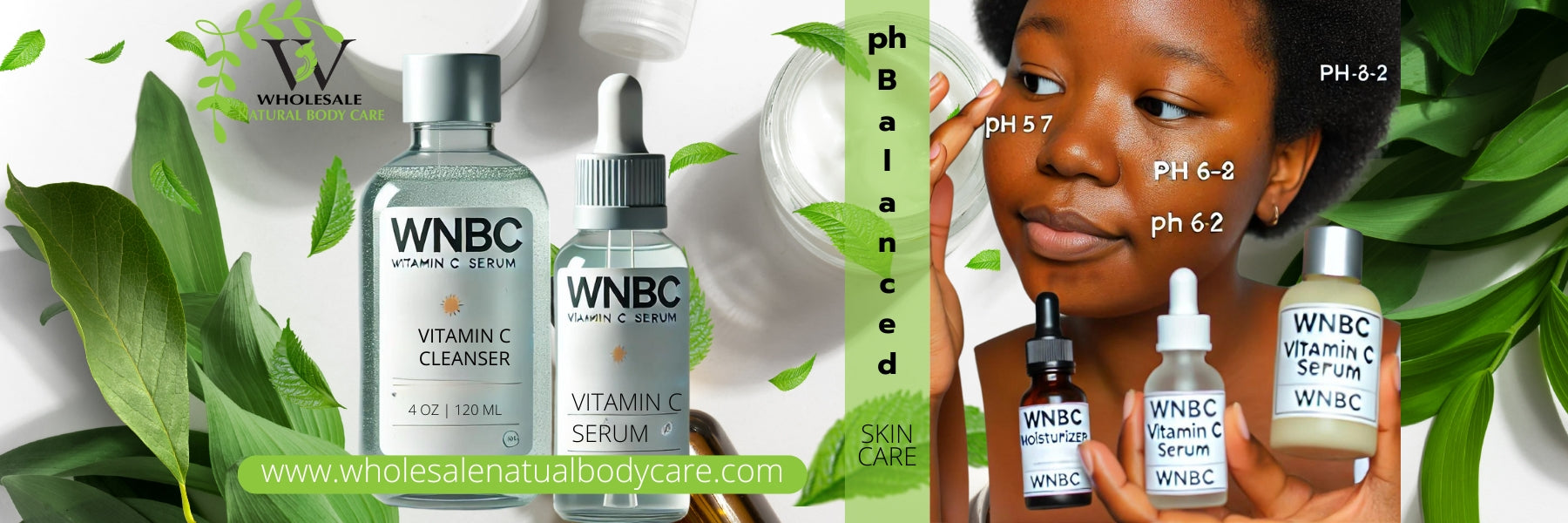What is the Best pH for Skin Care Products?
Moisturizers and Serums:
- Moisturizers: pH 5 - 7
- Serums: pH 4 - 6
- Everyday Cleansers: pH 4.5-5.5
- Exfoliating Cleanser: pH 3.2-3.9
Examples of Acidic Products:
-Vitamin C Serums: pH 2.6 - 3.2 (for exfoliation)
- AHA/BHA Products: pH 3 - 4 (also for exfoliation)
What not to do - Avoid Combining:
- Do not mix low pH products with peptides or proteins.
- Wait 30-45 minutes after using low pH products before applying peptides/proteins.
How to Use the Right Products for Your Skincare Routine
1.Avoid Combining Low pH and Peptides/Proteins:
- Wait 30-45 minutes after using a low pH product before applying peptides/proteins.
- Example: If using Vitamin C Serum in the morning, wait 30 minutes before applying a product like Collagen Serum.
2. Evening Routine:
- Use Vitamin C Serums in the evening for exfoliation.
- Follow with products like Every Lipid Serum or Hyaluronic Acid Moisturizer.
3.Remembering pH Levels:
- Use pH strips to check product pH levels.
4.Retinoids and pH:
- Retinoids (pH 4 - 6.6) can be used with peptides/proteins.
5.Oil-Based Serums:
- pH strips do not work on oil-based serums like Glycolic Alpha Beta Exfoliant Solution.
Tips:
- Experiment with products to find what works best for your skin.
- Avoid routines or products that cause redness or irritation.
More detail information on the 5 Steps above
Based on Facial Moisturizers, most moisturizers have a pH range of 5 - 7. Most serums normally fall between 4 - 6. The majority of your skincare products are tradionally within this range. Products with more acidic ranges, such as ascorbic acid (vitamin C) based serums, have lower pH of around 2.6 - 3.2 to help exfoliate the skin. AHA/BHA products have a pH range of 3 - 4 and also promote exfoliation. Due to their low pH, you shouldn’t customize these products with peptides or protein ingredients, nor layer them together without waiting. Peptides and proteins are sensitive to extreme pH ranges and the low pH will destroy them. Avoid using anything lower than a pH of 4 or higher than 7 with peptides/proteins in a formulation or when layering products without waiting.
WNBC's Tips how to use the right product to enhance your Skincare Routine
- Don’t combine a product with peptides or proteins with a low pH range product as they will not work properly and these active will not perform as designed. We suggest you wait about 30-45 minutes after applying a low pH product so your skin can adjust before applying products with peptides and proteins. Alternatively, don’t pair them together at all. For example, if you use Vitamin C Serum or face cream at a rate of (15% or 20%) in the morning, wait 30 minutes before applying a product like Collagen Serum containing EGF (sh-Oligopeptide-1). If waiting isn’t feasible, pair your low pH products with those that don’t contain any peptides or proteins.
- Evening Routine: Use Vitamin C Serums in the evening for exfoliation, followed by Every Lipid Serum or Hyaluronic Acid Moisturizer. These products don’t contain sensitive peptides and proteins. Despite its name, Hyaluronic Acid isn’t acidic; it’s a water-absorbing molecule.
- Remembering pH Levels: To remember which ingredients or products have low pH ranges, purchase some pH strips online. These strips change color and provide a guide on their packaging to check the range.
- Retinoids and pH: Know that retinoids, though they exfoliate the skin, aren’t low pH. Typically, retinol products have a pH range of 4 - 6.6, meaning you can use them with peptides and proteins. Products with a pH over 7 are not good for skin, and you won't find such alkaline products.
- Oil-Based Serums: You can’t read the pH range of an oil serum. Our Glycolic Alpha Beta Exfoliant Solution is an oil-based serum for chemical exfoliation, but since it’s an oil, pH strips won’t read its pH.
#wholesalenaturalbodycare #skincaretips #kojicacidskincarebrightening #skincareph #privatelabelskincare





